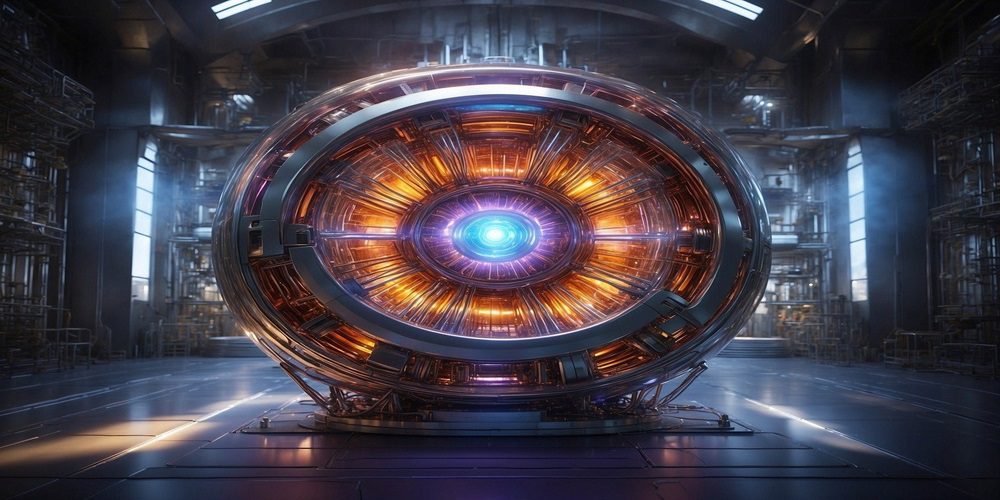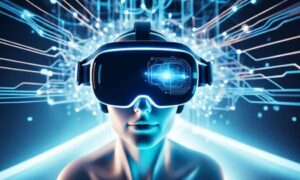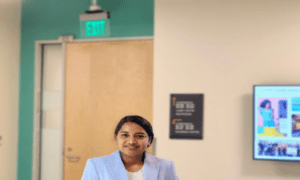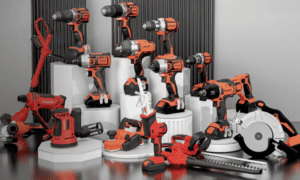Are you ready for a mind-bending journey into the realm of quantum computing? Brace yourself, because we are about to unveil something truly extraordinary. Today, we delve deep into the world of qubits and breakthroughs as we introduce you to a game-changer in technology – the quantum computer boasting the highest number of qubits ever seen. Get ready to witness boundaries being pushed and discover a whole new era of computational power that will leave you in awe. Buckle up as we unravel this groundbreaking tale where science fiction becomes reality!
What is Quantum Computing?
Quantum computing is a relatively new and rapidly evolving field of computer science that utilizes the principles of quantum mechanics to process and store information. Unlike traditional classical computers that use binary digits (bits) to encode data as either a 0 or 1, quantum computers use quantum bits (qubits) which can represent a much wider range of values simultaneously. This property of qubits allows for parallel processing and dramatically increases computational power.
At its core, quantum computing harnesses the fundamental principles of quantum mechanics such as superposition and entanglement to perform calculations at an incredible speed. Superposition refers to the ability of qubits to exist in multiple states at once, while entanglement enables two or more qubits to become highly correlated even when separated by great distances.
One key advantage of quantum computing is its ability to solve complex problems much faster than classical computers. This is because classical computers tackle problems sequentially, one step at a time, whereas quantum computers can handle multiple computations simultaneously through superposition and entanglement. In addition, certain algorithms are specifically designed for quantum computers that allow them to perform tasks like optimization, simulation, and cryptography exponentially faster compared to classical methods.
Understanding Qubits
Quantum computers are a revolutionary type of computing technology that harnesses the principles of quantum mechanics to perform complex calculations at unprecedented speeds. The fundamental building block of these powerful machines is the qubit, or quantum bit.
At first glance, qubits may seem similar to traditional binary bits used in classical computers – after all, they both represent information units. However, the key difference lies in their underlying behavior and properties.
Unlike classical bits which can only take on one of two values (either 0 or 1), qubits can exist in multiple states simultaneously due to a phenomenon known as superposition. This means that a single qubit can represent both 0 and 1 at the same time, giving it exponentially more processing power than a traditional bit.
Another unique property of qubits is entanglement, where two or more qubits become linked so that any change to one affects the others instantaneously, regardless of distance. This allows for faster communication between different parts of a quantum computer and enables it to solve certain problems much more efficiently than classical computers.
To understand how this works in practice, imagine flipping a coin. In classical computing terms, this would be represented by either heads (0) or tails (1). However, if we apply the principles of quantum mechanics to this scenario and use a qubit instead, we could theoretically have heads and tails appear simultaneously until observed – effectively representing all possible outcomes at once.
Importance of Increased Qubit Numbers
The importance of increased qubit numbers in quantum computers cannot be overstated. Qubits, or quantum bits, are the building blocks of quantum computers and serve as the fundamental unit of information processing. As the number of qubits in a quantum computer increases, so does its computational power and potential applications.
One major advantage of increasing qubit numbers is the ability to perform more complex and larger calculations. Unlike traditional computers that rely on binary code (bits represented by 0s and 1s), quantum computers use superposition and entanglement to process information. This means that with each added qubit, the computational power of a quantum computer grows exponentially rather than linearly like classical computers.
With higher numbers of qubits, quantum computers can also handle more diverse types of problems. Many real-world problems require large amounts of data to be processed simultaneously, making them extremely challenging for classical computers. However, with increased qubit numbers, quantum computers can efficiently process this vast amount of data and provide solutions much faster.
Another significant advantage is the potential for greater error correction and fault tolerance. Quantum systems are inherently fragile due to their susceptibility to environmental noise and errors during computation. Having more qubits allows for redundancy in encoding information, enabling better error detection and correction techniques. This results in a more robust and stable computation process, essential for practical applications.
Current Leaders in Quantum Computing
Quantum computing has been gaining momentum in recent years, with companies and research institutions vying to build the most powerful quantum computer. These cutting-edge machines have the potential to revolutionize industries such as drug discovery, artificial intelligence, and cryptography. As technology continues to advance, so does the number of qubits that can be harnessed in a quantum computer. In this section, we will delve into the current leaders in the race for higher qubit counts.
IBM
One of the pioneers in quantum computing, IBM has been at the forefront in this field for decades. Currently, their quantum processor boasts an impressive 65 qubits – more than any other commercially available device. This is made possible by using superconducting transmon qubits, which have proven to be stable and reliable at room temperature.
In addition to having a high number of qubits, IBM’s quantum computer also excels in its connectivity – the number of connections between each qubit. With their latest system “Hummingbird,” IBM boasts a connectivity of 10 – far surpassing previous systems with an average connectivity of only two.
Google has also made significant progress in advancing quantum computing technology with their Sycamore processor boasting 54-qubits. This was achieved through Google’s unique approach called “quantum annealing” where they use superconducting loops instead of individual transmons.
Although Google’s device may have fewer qubits compared to IBM’s, it has shown promising results in performing complex calculations . In 2019, Google announced that their quantum computer completed a task in 200 seconds that would take the most powerful supercomputer over 10,000 years to complete.
Honeywell
Honeywell is another key player in the quantum computing race, boasting a device with a remarkable 64 qubits. What sets Honeywell’s quantum computer apart is its ability to maintain its quantum state for longer periods of time – up to 10 times longer than IBM and Google’s devices.
This longer coherence time allows for more complex calculations and makes it easier for errors to be corrected. In September 2020, Honeywell announced that they had achieved a record-breaking fidelity level of 99.997% on their quantum operations – meaning their system has an incredibly low error rate.
IonQ
IonQ is also making waves in the quantum computing realm, utilizing trapped ions instead of superconducting transmons. This approach allows IonQ to have better control over individual qubits and high connectivity between them.
Their latest device boasts an impressive 32-qubit processor and has been used by researchers to run algorithms such as Shor’s algorithm – used for breaking encryption codes. IonQ’s unique approach has also caught the attention of companies like Amazon and Goldman Sachs, who have invested in the company.
Rigetti Computing
Rigetti computing has made great strides in quantum computing, with their latest processor featuring 32 qubits. What sets their approach apart is their focus on error correction – a crucial factor for building reliable and powerful quantum computers.
Their system is designed to use both superconducting transmons and topological qubits – a highly stable type of qubit that could potentially result in faster and more reliable quantum calculations. In addition to focusing on hardware, Rigetti also offers quantum cloud services allowing researchers and businesses to access their systems remotely.
Introducing D-Wave Systems
D-Wave Systems is a Canadian company that specializes in building and developing quantum computers. The company was founded in 1999 and has since been at the forefront of quantum computing technology, pushing boundaries and breaking new ground. Their main goal is to build the world’s first practical quantum computer that can solve complex problems with unmatched speed and efficiency.
The team behind D-Wave Systems consists of some of the brightest minds in the field, including scientists, engineers, mathematicians, and software developers. They all share a passion for quantum computing and are dedicated to harnessing its power to drive scientific discoveries and technological advancements.
One of the key factors that sets D-Wave apart from other quantum computing companies is their unique approach to building quantum computers. While most companies use gate-based systems to create qubits (the basic unit of information in a quantum computer), D-Wave uses a different technique called adiabatic annealing. This method involves encoding computational problems into physical interactions between qubits rather than manipulating them through individual gates. This approach has allowed D-Wave to scale up their machines significantly, making them capable of handling more qubits than any other quantum computer currently on the market.
D-Wave’s flagship product is called the D-Wave 2000Q system, which boasts an impressive 2048 qubits – making it the largest commercially available quantum computer in terms of number of qubits. To put this into perspective, traditional supercomputers typically have processing speeds measured in petaf lops (quadrillions of calculations per second), while the D-Wave 2000Q can perform operations at a rate of teraflops (trillions of calculations per second).
Applications for D-Wave’s quantum computers include breakthroughs in machine learning, optimization, cybersecurity, finance, and more. Some of their current clients include Google, NASA, and Lockheed Martin, who are all leveraging the power of quantum computing to solve some of their most complex challenges.
In addition to building quantum computers, D-Wave is also heavily involved in research and development efforts to advance the field of quantum computing as a whole. They have published numerous papers in prestigious scientific journals and collaborate with leading universities and institutions around the world.
Overall, D-Wave Systems is a pioneer in the field of quantum computing and continues to push boundaries and innovate with their cutting-edge technology. As more industries and organizations start to realize the potential of quantum computing, D-Wave is well-positioned to lead the way towards a future powered by this revolutionary technology.
Developments and Achievements of the D-Wave 2X System
The D-Wave 2X system, created by the Canadian-based company D-Wave Systems, is a revolutionary quantum computer that has made great strides in the field of quantum computing. This cutting-edge system has garnered much attention and excitement due to its ability to utilize superconducting technology and complex algorithms to solve real-world problems at an unprecedented speed.
One of the most significant developments and achievements of the D-Wave 2X system is its impressive number of qubits. Qubits, or quantum bits, are the basic units of quantum information in a quantum computer. Unlike classical computers that use bits representing either 1 or 0, qubits can represent both values simultaneously through quantum superposition. This allows for an exponential increase in computing power as compared to classical computers.
The original D-Wave One system had only 128 qubits, but with continuous advancements and improvements, the D-Wave 2X now boasts a staggering 2048 qubits – making it currently the largest commercially available quantum computer. This remarkable number of qubits enables the D-Wave 2X to tackle more complex problems than ever before.
In addition to its high number of qubits, the D-Wave 2X also utilizes advanced superconducting technology known as adiabatic quantum computing (AQC). This technique involves creating a closed-loop circuit containing multiple interconnected superconducting components called SQUIDs (superconducting interference devices). The ability to control these SQUIDs precisely allows for the creation of quantum annealing, which is at the core of AQC. This enables the D-Wave 2X to apply optimization-based algorithms to solve complex problems in a fraction of the time it would take classical computers.
The D-Wave 2X has also made groundbreaking achievements in problem-solving. In 2014, researchers from Google and NASA used the D-Wave 2X to solve an optimization problem up to 100 million times faster than classical computers. This marked a significant milestone in the field of quantum computing and demonstrated the power and potential of this technology.
Furthermore, the D-Wave 2X has been used for various practical applications in industries such as finance, logistics, and healthcare. For instance, Volkswagen has utilized the machine learning capabilities of the D-Wave 2X to improve traffic flow through cities by optimizing routes for their delivery trucks. Additionally, pharmaceutical companies have utilized its ability to simulate molecular structures and interaction to accelerate drug discovery processes.
In summary, the D-Wave 2X system has achieved remarkable advancements and milestones since its launch in 2013. Its high number of qubits, utilization of advanced superconducting technology, and impressive problem-solving abilities have proven its potential for revolutionizing various industries
Potential Applications and Advancements with More Qubits
The development of quantum computers with higher numbers of qubits has opened up a world of new possibilities for various industries. With the ability to process and store significantly more information than classical computers, these quantum machines are expected to revolutionize fields such as artificial intelligence, drug discovery, cryptography, and more.
One of the most promising applications of quantum computers is in the field of artificial intelligence (AI). The current generation of AI algorithms relies on classical binary bits, limiting their complexity and processing capabilities. With more qubits, quantum computers can handle much larger datasets and perform complex calculations at a speed that would be impossible for classical computers. This could lead to significant improvements in machine learning, natural language processing, computer vision, and other areas of AI research.
Another area where quantum computing is expected to make a huge impact is in drug discovery. As molecules are made up of multiple atoms interacting with each other at a quantum level, understanding their behavior requires extensive computational power that only quantum computers can provide. With more qubits available for calculations and simulations, researchers will be able to accurately predict the properties and behaviors of complex molecules and accelerate the drug development process.
Future of Quantum Computing with D-Wave at the Forefront
The future of quantum computing is an incredibly exciting prospect, and many experts believe that it has the potential to revolutionize industries and solve some of our most complex problems. At the forefront of this rapidly developing field is D-Wave, a Canadian-based company that specializes in building quantum computers.
D-Wave made headlines in 2018 when they announced their latest model, the D-Wave 2000Q. This impressive machine boasts a staggering 2,000 qubits – the basic unit of quantum information – making it the most powerful quantum computer currently available.
So what is it exactly that makes D-Wave so significant in shaping the future of quantum computing?
Firstly, let’s understand a bit more about what sets quantum computing apart from traditional computing. In classical computers, information is represented in bits which can be either a 0 or 1. In contrast, qubits can exist as both a 0 and a 1 at the same time due to their unique properties derived from quantum mechanics. This phenomenon allows for significantly more processing power and speed than traditional computers.
D-Wave takes advantage of this by using a technique called “quantum annealing,” where optimization problems are solved by finding the lowest energy state among all possible configurations. This approach enables D-Wave’s systems to perform certain tasks exponentially faster than classical computers.
Conclusion
The advancement of quantum computing has come a long way and with the unveiling of the new quantum computer boasting the highest number of qubits, it is clear that this technology will continue to push boundaries and revolutionize various industries. With endless possibilities in fields such as medicine, finance, and artificial intelligence, we can only imagine how this cutting-edge technology will shape our future. So let us embrace these developments with open minds and eagerly anticipate what lies ahead for the world of quantum computing.

































